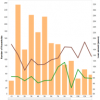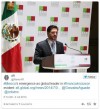This blog is a republication of a post from the MimosaIndex.org website.
Since publishing the first MIMOSA report – on Cambodia – I’ve heard one persistent critique. We say that the market is saturated, yet none of the current indicators appear to support it: repayments are great, there’s no field evidence of widespread overindebtedness, and the major MFIs are all undergoing a process of Smart Certification. How can we assert that Cambodia is at risk of overindebtedness, let alone a credit crisis, when no other indicators seem to support it?







0